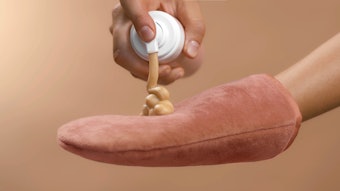
We all know that nutrition can lead to healthy, glowing and even younger looking skin, but, is it possible that what we eat can actually protect us from the sun as well? Karin Hermoni, Ph.D., skin care expert and head of science and nutrition at Lycored, discussed the basics of ingestible sunscreen, and what it can really do.
Ingesting Your Sun Care
Whether it be from a skin cancer standpoint or a skin aging standpoint, the idea of sun damage is never a positive. Hermoni explains though how "sun exposure is the number one preventable cause of skin aging." On top of protective clothing and wearing topical sunscreen, Hermoni dives into how a lot of sun care can start from the inside out.
Phytonutrients. Filling your body with natural phytonutrients from fruits and vegetables "provides an array of antioxidants that build the antioxidant reservoir in our skin. This reservoir, in fact, serves as the first line of defense against UV and sun exposure," Hermoni explains.
Carotenoids. This deals more with the plant pigments that are ingested into the body. Carotenoids also provide strong antioxidant and anti-inflammatory properties, which, according to Hermoni, can boost the protection mechanisms of the skin as well.
Polyphenols. Fruits and spices are the way to go when trying to get more polyphenols in your diet. These simply work to also promote skin wellness and provide antioxidants.
Taste the Rainbow. Sorry no skittles are involved in eating toward better protected skin, but Hermoni explains how "a combination of different natural phytonutrients from fruits, vegetables and spices can work synergistically to provide better benefits."
Supplements. A pretty hot trend in the beauty community right now is ingesting nutrients that are good for your skin and body through supplements.
The Difference Between Ingesting and Applying
Hermoni made sure to clarify that these nutritional methods of sun protection "are not meant to replace sunscreen but provide a complimentary layer of defense that helps the body cope with the local damage..."
Instead, think of ingestible and topical sunscreen as a very necessary pair. Hermoni further dives into how ingestible sunscreen can more-so come to the rescue if there is a missed spot from applying topical sunscreen, or if someone re-applies their sunscreen too late. However, it should not be used as a sole method.
Also, keep in mind that "phytonutrients, such as carotenoids, are absorbed in the plasma and then incorporated into our skin to create that antioxidant reservoir, and it can take up to a few weeks to reach maximum levels of carotenoids in the skin," Hermoni stresses.
What About Other Harmful Light?
With a higher understanding of how the entire light spectrum has an effect on a person's health and well-being, it is important to understand how to protect the skin from more than just UV damage. Phytonutrients have been shown to be relevant in protecting our skin and our eyes from not only UV damage but also from blue light, visible light and infrared light.
Lutein, Hermoni explains, has the ability to filter blue-light, and it can be found in egg yolk, corn and green leafy vegetables like kale. This yellow xantophile can also be found in supplements that are derived from the marigold flower.










